From the 1960s to the early 1970s, the Zodiac Killer terrorized Northern California, claiming responsibility for at least five murders and taunting police with cryptic letters and ciphers. Cloaked in a hooded costume or striking from the shadows, this elusive killer targeted young couples, a cab driver, and threatened schoolchildren, leaving a trail of bloodshed and unsolved mysteries. This article in our Cold Cases series delves into the Zodiac Killer’s gruesome crimes, the ongoing investigation, and the enduring fascination with one of America’s most infamous unsolved cases as we reflect in 2025.
Historical Context: Northern California in the 1960s
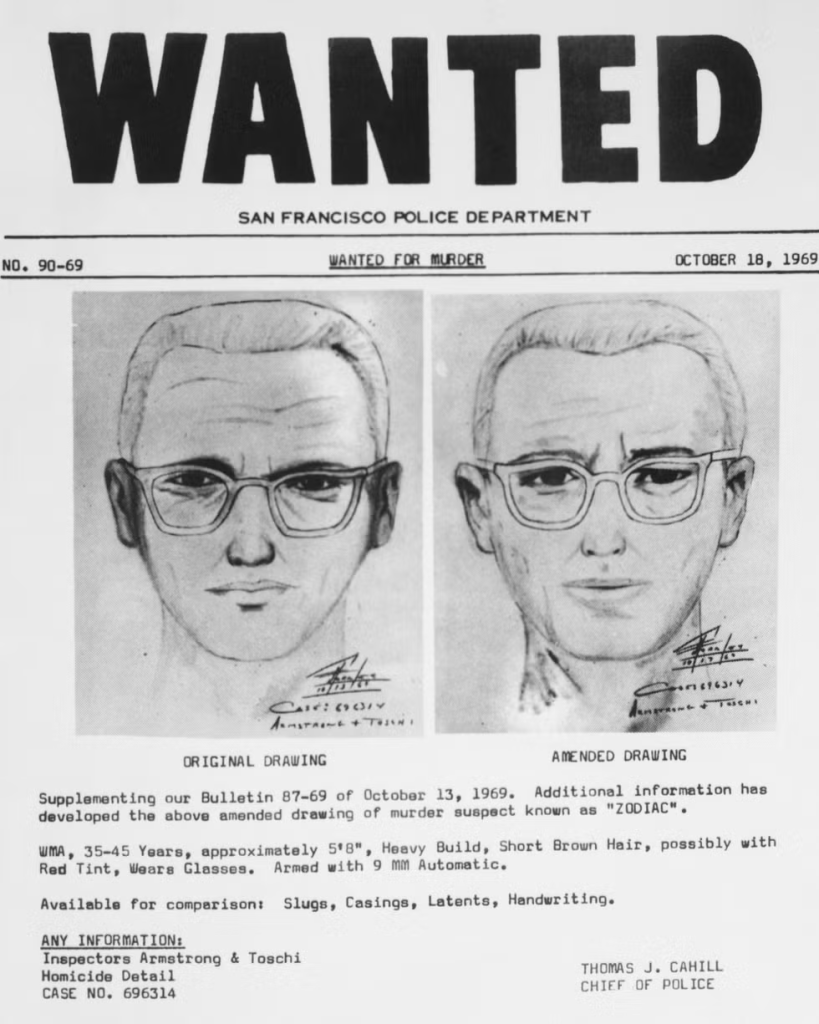
The Zodiac Killer emerged during a turbulent period in Northern California, a region marked by the counterculture movement, rapid urbanization, and social upheaval of the 1960s. Cities like San Francisco, Vallejo, and Napa Valley were hubs of change, with sprawling suburbs and isolated rural areas like Lake Herman Road serving as backdrops for the killer’s attacks. The post-World War II boom had brought prosperity, but racial tensions, crime, and a growing fascination with the occult and ciphers—fueled by Cold War espionage—created a fertile ground for a mysterious figure to captivate the public.
The era’s law enforcement relied on rudimentary forensic techniques, lacking the DNA analysis and digital tracking available today. This limitation, combined with the killer’s meticulous planning—wiping down crime scenes and using payphones—allowed him to evade capture. The Zodiac’s emergence coincided with heightened media coverage of crime, amplifying his notoriety as newspapers published his letters, sparking a nationwide obsession that persists into 2025.
Early Attacks: A Pattern Emerges
The Zodiac Killer’s potential first crimes date back to June 4, 1963, at Tahoe Point near Santa Barbara, California. Eighteen-year-old Linda Edwards and her fiancé, Robert “Bobby” Domingos, were sunbathing on senior ditch day when a gunman attacked. Bound with precut nylon rope, the couple was dragged to a makeshift shack, shot multiple times with a .22-caliber semi-automatic rifle—bullets piercing their chests and heads, blood pooling on the rocky ground. The killer attempted to burn the shack, leaving their charred, mutilated bodies undiscovered until the next day. The case, initially unsolved, was later linked to the Zodiac due to similar methods.
Three years later, on October 30, 1966, 18-year-old Cheri Jo Bates was murdered near Riverside Community College. After spending the day in the library, Bates found her Volkswagen Beetle’s ignition disabled by the killer, who had severed the wiring. Lured from her car with an offer of help, she was stabbed repeatedly in the chest and left shoulder, deep slash wounds carving into her face and neck, blood drenching the ground. A Timex watch, a military boot print, and DNA under her fingernails suggested a struggle, but pre-DNA technology limited leads. Handwritten letters claiming responsibility, signed with a “2” or “Z,” hinted at the Zodiac’s early signature, though police initially dismissed them as a hoax.
Escalation: The Confirmed Killings Begin
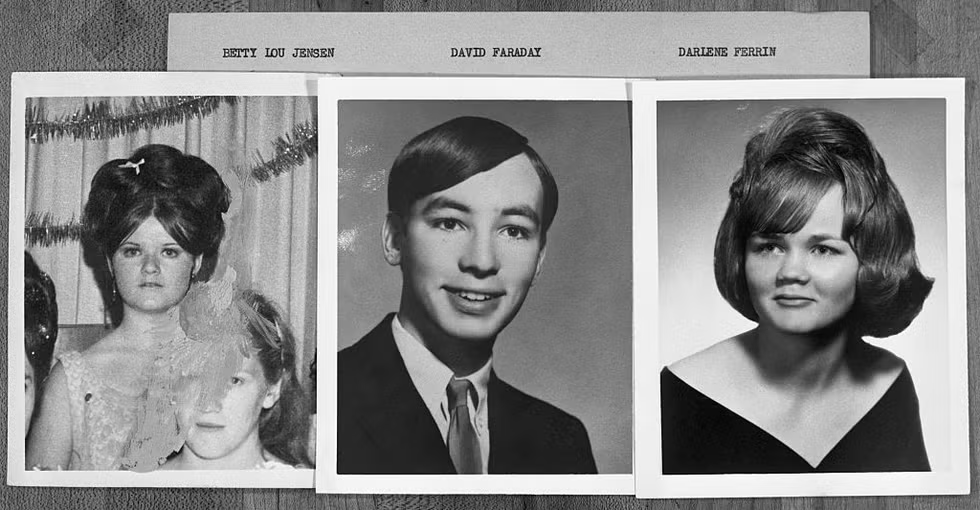
The Zodiac’s confirmed spree began on December 20, 1968, at Lake Herman Road in Benicia. Sixteen-year-old Betty Lou Jensen and 17-year-old David Faraday, on their first date, parked in a secluded “lover’s lane” area. Around 11:00 p.m., a man with a .22 handgun fired warning shots, shattering their car window and striking the ceiling. Ordered out of the vehicle, David was shot beneath his left ear, the bullet tearing through his brain, killing him instantly as he collapsed next to the car. Betty Lou, attempting to flee, was hit with multiple shots to her back, her body found 33 feet away, blood staining the frozen ground. The frigid 22°F (-5°C) night erased tire tracks and footprints, leaving investigators with little evidence.
Seven months later, on July 4, 1969, 22-year-old Darlene Ferrin and 19-year-old Michael Mageau were attacked at Blue Rock Springs Park in Vallejo. Parked in Ferrin’s car, they were approached by a man wielding a flashlight, whom Mageau mistook for a cop. Suddenly, a muffled gunshot struck Mageau’s neck and back, burning pain searing through him as he scrambled to the backseat, taking a bullet to his knee. Ferrin, turning away, was shot in both arms and her back, blood gushing from her wounds as she slumped over. The killer returned, firing two more rounds into each victim. Mageau survived, tumbling out to flag help, while Ferrin died. A 12:10 a.m. 911 call from the killer, in a monotone voice, claimed the murders and referenced Lake Herman, traced to a wiped-down payphone near the Vallejo Police Department.
The Taunting Letters and Ciphers
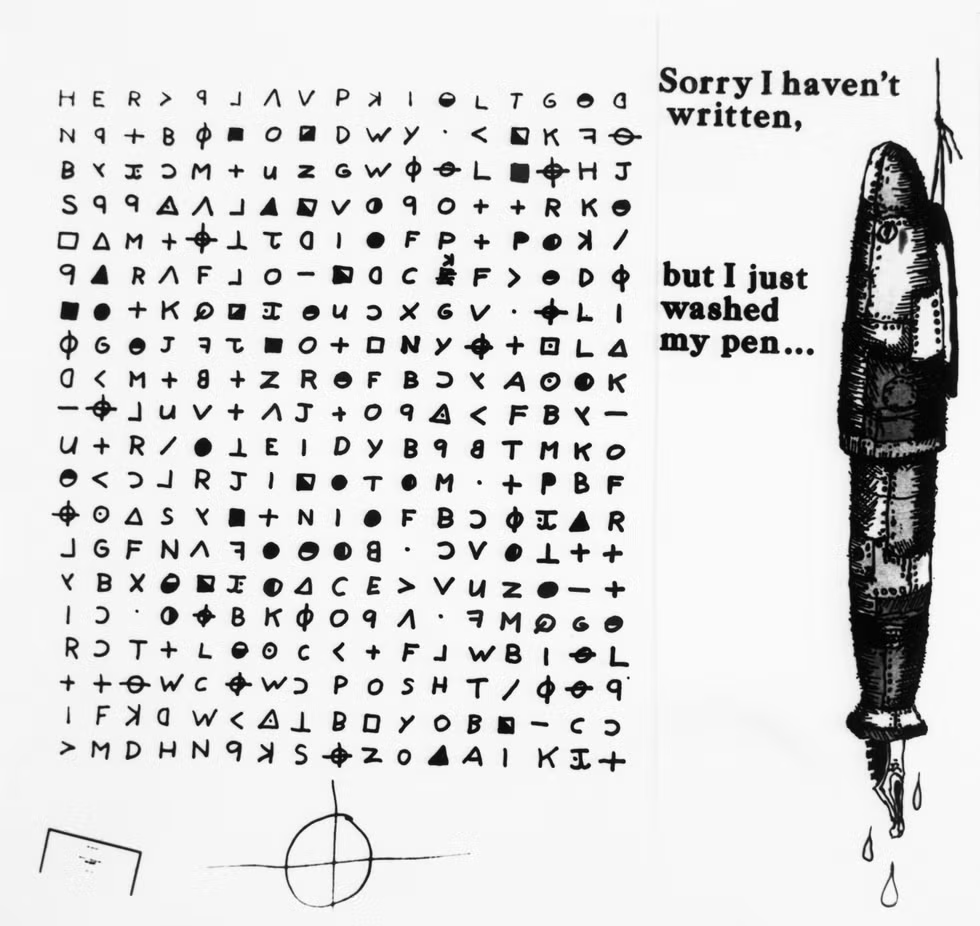
On July 31, 1969, the Zodiac announced himself, sending letters to the San Francisco Chronicle, San Francisco Examiner, and Vallejo Times-Herald. Each contained a third of a 408-symbol cipher, detailing the Blue Rock Springs attack with non-public specifics, proving his involvement. The letters, signed with a crosshair symbol, threatened to kill a dozen people if the ciphers weren’t published. A week later, a schoolteacher and his wife decoded the 408 cipher, revealing: “I like killing people because it is so much fun… I will not give you my name because you will try to slow down or stop my collecting of slaves for my afterlife.” This chilling insight into his psyche fueled public fear.
The Zodiac’s correspondence continued, with over 20 letters sent through 1974. On September 27, 1969, he struck again at Lake Berryessa, where 20-year-old Bryan Hartnell and 22-year-old Cecelia Shepard picnicked. A hooded man in a black executioner-style outfit, featuring the crosshair symbol, approached, claiming to be an escaped convict. After tying them with a precut clothesline, he stabbed Hartnell six times in the back, blood soaking his shirt as he played dead. Shepard suffered a frenzied attack, stabbed in the back and stomach, her body writhing as the blade tore through her organs. She died two days later; Hartnell survived. The killer marked Hartnell’s car with the crosshair and dates, later calling Napa police to report the “double murder.”
On October 11, 1969, 29-year-old cab driver Paul Stine was shot in the head with a 9mm Luger in San Francisco’s Presidio Heights, his skull exploding in a spray of blood and brain matter. Teen witnesses saw the killer cut off a shirt piece, wipe down the cab, and walk away. A letter with the bloody fabric mocked police for missing him, threatening to “wipe out a school bus” by shooting tires and “pick off the kiddies.” The 340 cipher, released publicly, was decoded in 2020, stating: “I hope you are having lots of fun trying to catch me… it will send me to paradise all the sooner.” Subsequent letters included bomb diagrams and a 1974 quote from The Mikado, adding theatrical flair.
Suspects and Investigations
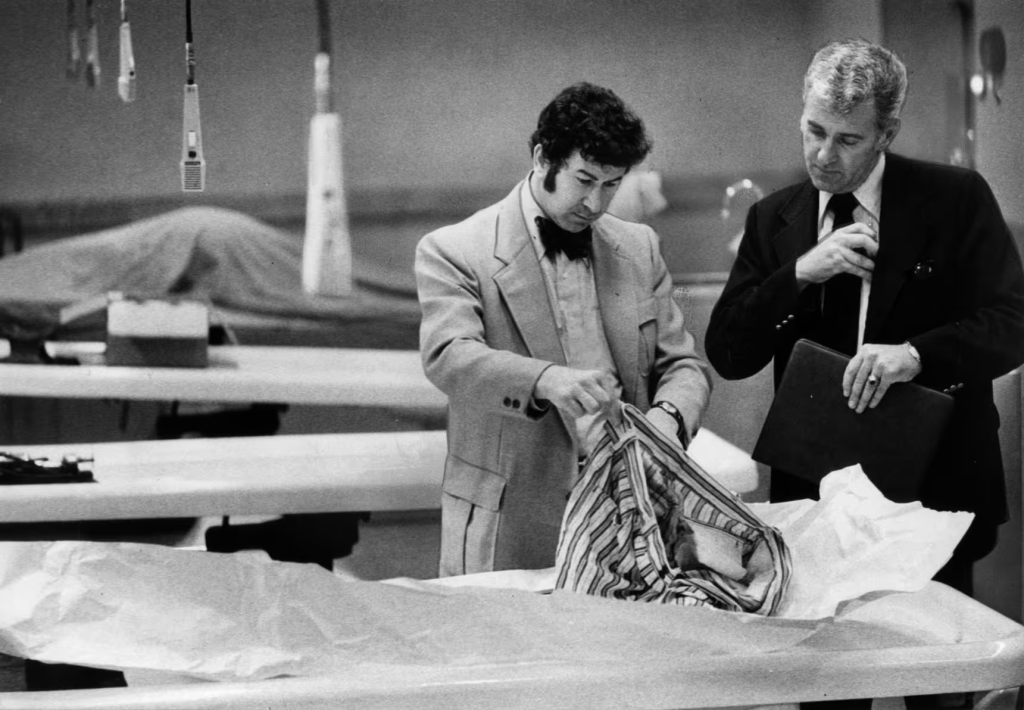
Arthur Leigh Allen emerged as the prime suspect after 1971, when friend Don Cheney reported Allen’s boasts about hunting humans and targeting school buses—echoing Zodiac threats. Allen, a 5’9”, 250-pound elementary school teacher with a Zodiac watch, lived near crime scenes, owned weapons, and had a criminal past, including child molestation. Searches of his trailer in 1991 uncovered pipe bombs, bomb-making diagrams, and a typewriter matching Zodiac letters, but fingerprints, handwriting, and DNA (from stamps) didn’t match. His 1974-1977 institutionalization aligned with the Zodiac’s silence, yet lack of concrete evidence prevented arrest.
Other suspects include Gary Francis Poste (died 2018), linked by the Case Breakers in 2021 to facial scars and cryptography skills, though DNA didn’t match; Richard Gaikowski, whose writing and disappearances raised suspicion; Lawrence Kane, accused of stalking Ferrin; Ross Sullivan, tied to Bates’ murder via his library job; and Earl Van Best Jr., implicated by his son’s 2014 book, discredited due to DNA mismatches. Despite thousands of tips and modern forensics, no suspect has been conclusively tied to the crimes.
Legacy and the Unsolved Mystery
The Zodiac’s letters ceased after 1974, with a 1978 letter deemed a hoax. The case remains open, with two ciphers (Z13 and Z32) unsolved. Advances in DNA and AI analysis offer hope, but as of 2025, no matches have emerged. The killer’s elusiveness—killing at least five, possibly 37 as claimed—cements his legend, explored in books, films like Zodiac (2007), and the 2021 Netflix series This Is the Zodiac Speaking. This article in our Cold Cases series highlights the enduring quest for justice, urging continued investigation to solve this 55-year-old enigma.
Sources
- San Francisco Chronicle. (1969–2025). Archives on Zodiac letters and investigations.
- FBI Records. (2020). Decoded 340 cipher and case updates.
- The New York Times. (2021). Coverage of Case Breakers’ Gary Poste theory.
- ZodiacKillerFacts.com. (2025). Comprehensive suspect and evidence analysis.
- Equal Justice Initiative. (2019). Historical context of 1960s crime in California.
- Bailey Sarian. (2023). “Zodiac Killer.” Murder, Mystery & Makeup.
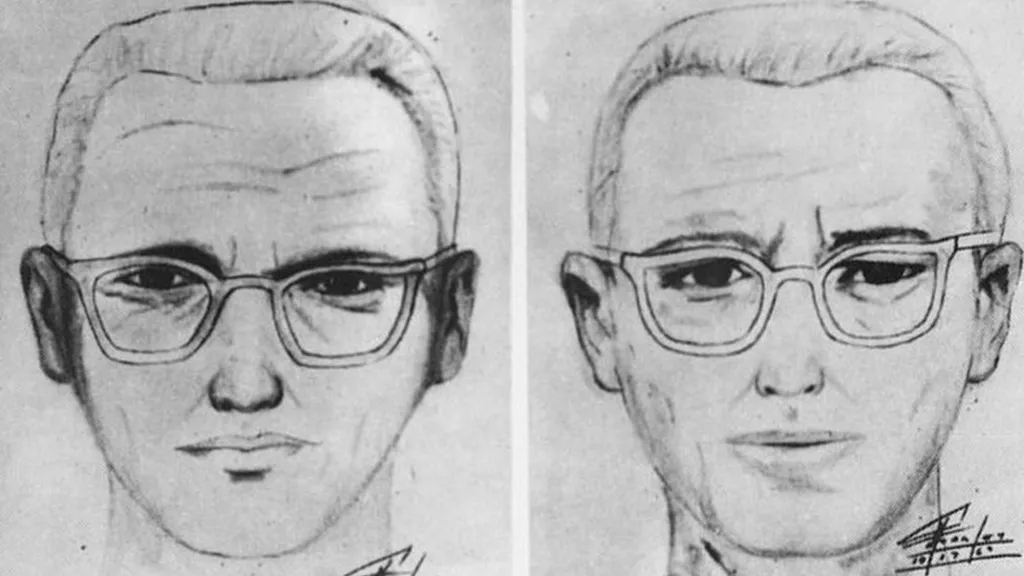
Leave a Reply
You must be logged in to post a comment.